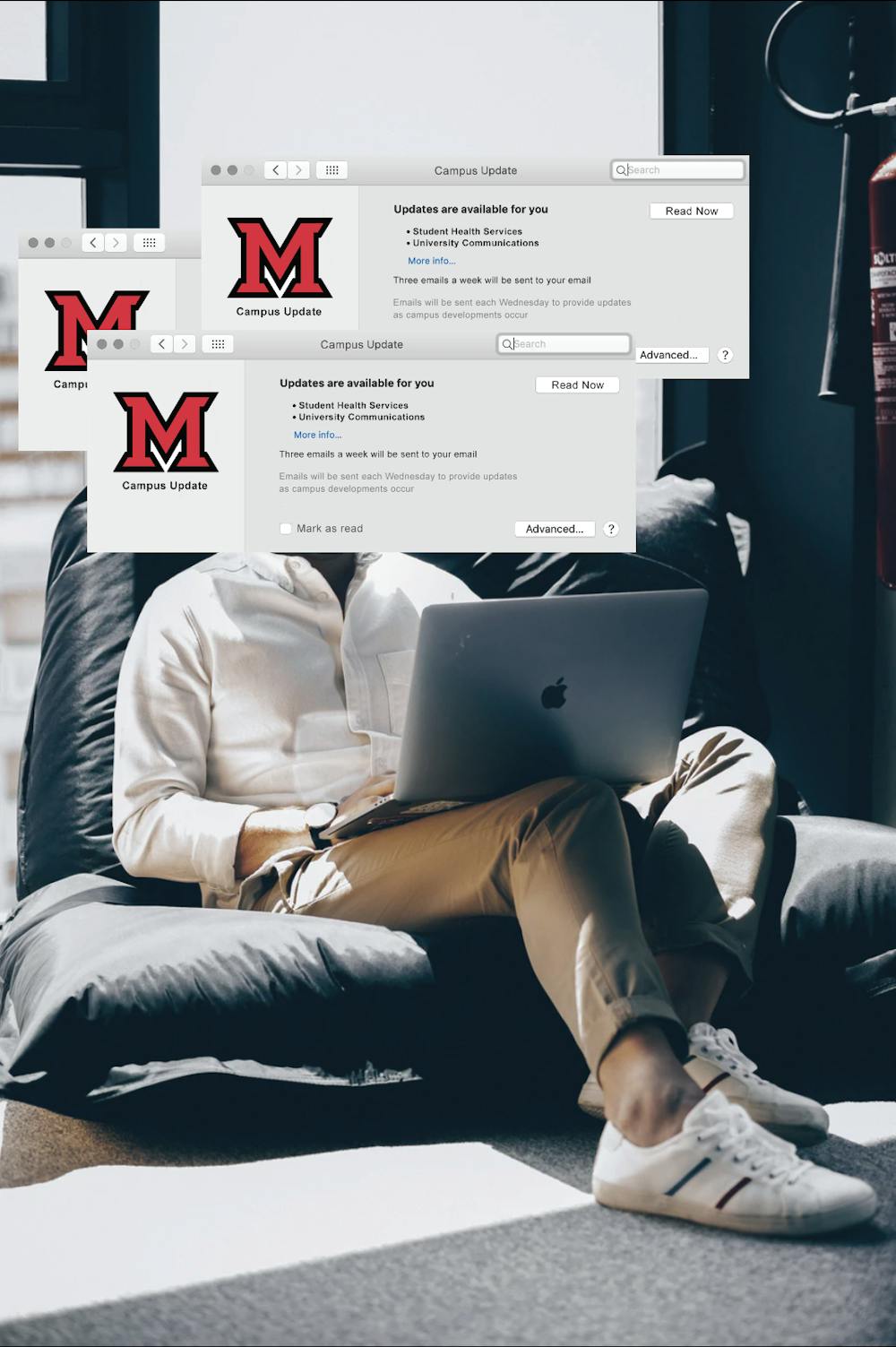Last semester, Miami University students received information on the COVID-19 pandemic through emails from President Crawford, the offices of the Provost, student life, residence life, student health services and university communications. This semester, the sources of information have been narrowed down to two: the division of student life and the COVID-19 response team.
Last October, student life began sending Weekly Three emails to detail important campus updates in a concise way for students. In an effort to make communication clearer and more condensed, the COVID-19 response team has adopted a similar method this semester, sending an email to students each Wednesday.
“What we heard about communication related to COVID-19 was that it wasn’t predictable, that there were too many messages, that it came from too many different sources,” said Jayne Brownell, vice president for student life. “When students get too many different emails, sometimes they’ll miss something.”
Brownell said parents and students had the same complaints about how the university talked about COVID-19 in the fall: too many sources; dense, hard-to-read walls of text; an irregular schedule.
Miami’s Associated Student Government (ASG) noticed the same trends. ASG’s COVID-19 Ad hoc Committee detailed points of improvement for the university in an official report.
“While improving across the [fall] semester,” the committee wrote, “university communications often did not meet the students’ needs of being ‘understandable, correct, and timely.’”
In an email to the Miami Student, Ben Maldonado, ASG’s COVID-19 Ad hoc Committee chair, said the Weekly Three emails from the division of student life are a major step up in clear, concise communication.
“We as a committee actually loved [the Weekly Three] emails,” Maldonado wrote. “They were quick, concise, timely … everything we had been hoping for. In our multiple conversations with various members of admin, we continued to recommend this type of communication over and over again.”
The university listened.
In addition to the Weekly Three email from student life, students now receive COVID-19 information from the COVID-19 response team every Wednesday by noon.
Jaime Hunt, Miami’s chief marketing and communications officer, explained the benefits of the new list approach in an email to The Student.
“We wanted to move away from narrative emails and move toward sending communications with clear ‘sections’ so you can jump to the portion of most interest to you,” Hunt wrote. “We also feel like bulleted lists make the emails easier to read on a phone or tablet. At the end of the day, the information being shared is really important and we want to make it as consumable as possible.”
Enjoy what you're reading?
Signup for our newsletter
While the Wednesday emails are signed by the COVID-19 response team, many departments submit information to be included. Hunt said the healthy together committee, vaccination team, wellness days committee, academic affairs and others have suggested ideas for what to include.
Even though the division of student life drafts its own Weekly Three emails, Brownell said her department sends certain information to the COVID-specific Wednesday emails, as well.
“As part of student life these days, we are taking primary management of testing, remain-in-room, quarantine and isolation, and we’re on the vaccination committee,” Brownell said. “We don’t want [our] Weekly Three to get overloaded with all of that. That’s what the COVID messages are for.”
In addition to consolidating information and sources, Brownell said the university is working to include explanations for the decisions being made. When Bell Tower Commons closed indefinitely last semester, for example, students weren’t given a clear reason behind the decision.
“One (explanation) that we’re talking about that came up with the student life council that I’ll probably put in this week’s message is, “Why do you only have 48 hours to schedule your appointment for COVID testing?’” Brownell said.
ASG’s fall report suggested that university communications should focus on the reasoning behind decisions moving forward.
“The University must communicate the underlying reasoning behind their decisions,” the committee wrote. “When no rationale is provided, students and parents are typically quick to grow outraged, causing an even greater predicament for the University.”
University communications have not been perfect this semester. Maldonado pointed to Provost Jason Osborne’s initial decision to keep the credit/no credit deadline on Feb. 11 as a misstep. In the email sent to students on the decision, Maldonado’s name was signed even though he disagreed with the idea.
Still, university officials have made an effort to consider student feedback and adjust the way they talk about COVID-19 to students this spring. As the semester continues, Brownell has one hope for university emails.
“Honestly, I’d like students to read it,” she said. “We put a lot of information out there, but we hear from students that they don’t check email. But there is not another good alternative for communication. We are doing our best, and students need to meet us halfway and read what we put out so that they’re informed.”




